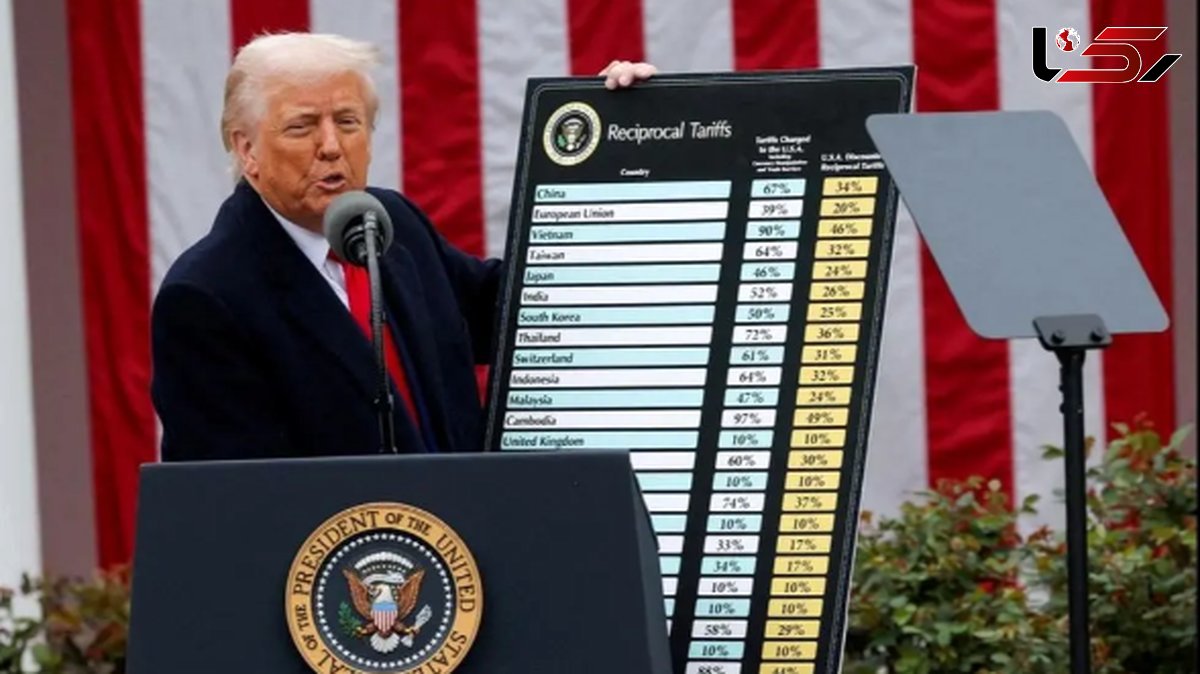America’s Metamorphosis: From Champion of Free Trade to Tariff Warfare Pioneer
Is Trump the End of U.S. Free Trade? The Collapse of an 80-Year Legacy
Rokna Political Desk – The Trump administration’s tariff policies have effectively brought to an end America’s 80-year trajectory of supporting free trade. These policies have not only imposed greater costs on consumers, but have also posed a serious challenge to the global economic order.


Fareed Zakaria, columnist for The Washington Post and anchor on CNN, reports via Fararu citing The Washington Post: Amid the noise of last-minute tariff threats and high-profile trade negotiations, a fundamental reality is being lost—the world is witnessing a profound transformation of its economic order. The United States, once the architect and staunch defender of free trade, today leads the major economies in average tariff levels, marking the highest rates seen in nearly a century.
America’s Historical Turnabout: From Free Trade Leadership to Tariff War
The Trump administration is effectively overturning eight decades of U.S. economic and foreign policy—one that consistently encouraged the removal of trade restrictions and tariffs worldwide. The consequences of this historic reversal are not to be measured in the daily fluctuations of stock markets, but rather in the shape of the world that emerges thereafter.
The White House has frequently declared, with pride, that President Trump has opened foreign markets to American products and forced closed economies into retreat. However, the reality paints a different picture: according to the European think tank Bruegel, prior to Trump’s second term, the average tariff on American goods in the European Union was only 1.35 percent, while the U.S. imposed an average tariff of 1.47 percent on European products. Even Japan, long considered a protectionist country, had an average tariff of around 3 percent on U.S. goods, while American tariffs on Japanese products hovered near 1.5 percent.
We once lived in a world governed by free trade, where tariffs were so low they were barely noticeable.
The MAGA Movement’s Illusion of Victory: Behind Trump’s Trade Claims
Markets have sighed in relief that Trump’s tariff walls have not risen as high as the dramatic promises of a “liberation day.” Investors who had braced for sky-high tariff rates have now settled for the fact that they are merely very high—not unimaginable. Yet the U.S. economy is largely driven by its domestic market; in 2024, exports accounted for less than 11 percent of the country's GDP.
Additionally, the structure of the U.S. economy today is overwhelmingly service-based. Eighty-six percent of non-agricultural jobs belong to the service sector. This same sector, which is the primary engine of economic growth, generated a trade surplus of about $300 billion for the U.S. in 2024.
The service industry has been almost entirely shielded from tariff impacts—largely because in Trump’s worldview, services are barely acknowledged. His focus remains squarely on goods manufacturing.
MAGA (Make America Great Again) leaders proudly assert that Trump has emerged victorious in the “trade war” with the European Union, Japan, and South Korea. Yet in truth, the President was acutely aware that the United States, thanks to its vast domestic market and the security umbrella it offers its allies, possessed a unique bargaining advantage.
He strategically leveraged this advantage during a time of rising geopolitical tensions to pressure America’s closest friends and extract concessions from them.
However, interpreting these modest gains as an American triumph reflects a fundamental misunderstanding of economics. In a trade war, there are no winners. Today, the United States has passed the cost of tariffs directly onto its own consumers. What does victory mean when lower-income American households must now pay more for groceries and clothing in stores like Costco and Walmart?
The Trumpian New Order: A Return to State-Controlled Economics Disguised as Nationalism
The deeper consequence of these policies is a fundamental reconfiguration of the global economic structure. For years, countries had been gradually moving away from discretionary government interference in global markets. There was a time when governments manipulated trade to manufacture national champions—champions that were often more politically powerful than economically efficient.
America took a different path, demonstrating that market-based competition yielded better outcomes. U.S. technology firms, relying on domestic competition, surpassed rivals like Sony of Japan and Philips of the Netherlands to achieve dominance in global markets.
But the world ahead presents a very different picture. Corporations are now forced to spend a significant portion of their time and resources complying with government policies. They must export their products first to countries with lower tariffs before re-exporting them to the U.S., or underreport certain products and overstate others to take advantage of exemptions and lower processing costs.
Lobbying has become more prevalent than ever, and even the most successful American companies now regularly petition Washington for exemptions and special treatment. Business executives who once staunchly opposed taxes and regulation now welcome the selective distribution of favors and punishments by the Trump administration.
Governments have always been eager to retain arbitrary control over their economies. It took the U.S. eighty years of continuous effort to persuade nations to submit to market forces and to empower civil society against state dominance. America built a world where countries had incentives to preserve peace, and where an ecosystem emerged that economically and geopolitically linked liberal democracies together.
Today, however, the United States is taking a completely opposite path.
Send Comments